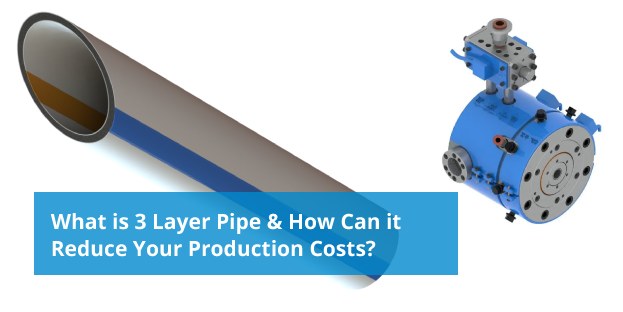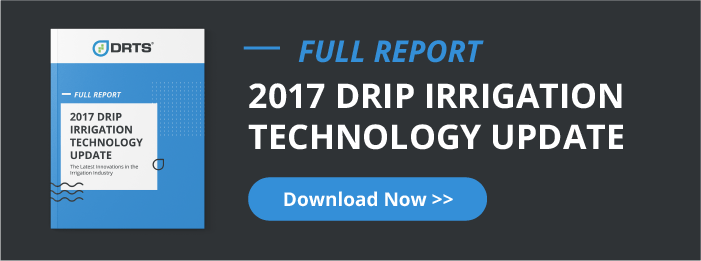The latest innovation in irrigation technology is three layer pipes/hoses. These irrigation pipes are manufactured using a special 3 layer crosshead which extrudes an inner and outer layer separated by a core of different material. The advantages of 3 layer irrigation pipes are cost savings and versatility. Three layer pipes can meet the technical standards of a high quality polymer single layer pipe with less cost by using an inexpensive core material. Three-layer pipe also provides greater versatility by allowing selection of layer materials to meet environmental and fluid handling challenges.
How 3 Layer Pipe Can Reduce Production Costs
When manufacturing pipes for irrigation systems, a key consideration is how to keep your costs down while still producing a product that customers perceive as high quality. One major cost is the material cost of the polymer used in making the pipe. Using a three layer crosshead allows you to use an inexpensive reground/off-spec polymer for the core of the pipe (about 80% of the material) and thus cut material costs significantly while still maintaining quality. The remaining portion of the pipe, the 10% of the outside and the 10% of the inside ring, are made from a higher quality virgin material.


Plastic Pipe Extrusion Crossheads
Extrusion Crossheads that produce these three-layer irrigation pipes can use a combination of two or three different materials during the extrusion process, with outer layers as thin as 1/100th of an inch (.00254 mm) or less (depending on the pipes thickness). You can use one material on the outside and inside with the regrind/off-spec in the middle or three separate materials, one for the outside, the regrind polymer, and then a third on the inside. These thin inside and outside layers still maintain industry standards on strength requirements and the inner and outer material completely encases the middle material.
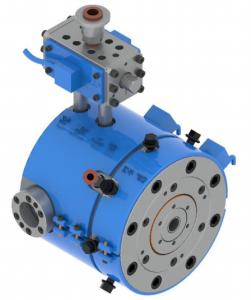
Extrusion Crossheads that produce these three-layer irrigation pipes can use a combination of two or three different materials during the extrusion process, with outer layers as thin as 1/100th of an inch (.00254 mm) or less (depending on the pipes thickness). You can use one material on the outside and inside with the regrind/off-spec in the middle or three separate materials, one for the outside, the regrind polymer, and then a third on the inside. These thin inside and outside layers still maintain industry standards on strength requirements and the inner and outer material completely encases the middle material.
The Benefits of 3 Layer Pipe
With Three-Layer drip irrigation pipes, the inner layer has a very significant importance, as this is the layer that comes into contact with and bonds to the dripper. The dripper is the core of your irrigation drip pipe hence maintaining the integrity and assuring the dripper performance is critical. The Three-Layer technology allows you to integrate virgin material only to the inner layer and by this assure that the performance will remain as with standard pipe. The outer layer is normally produced with virgin material mainly for cosmetic reasons.
One important consideration for manufacturers adopting this new technology into their process and producing three-layer pipes is customer education. Your marketing materials will need to build confidence that the inner and outer materials are strong enough to manage stresses that are placed on the pipe without splitting and allowing the middle material to contaminate the lines. These educational marketing materials can address technical advantages and environmental concerns to ensure customers that this new three-layer pipe technology will meet or exceed the performance of single layer pipe.
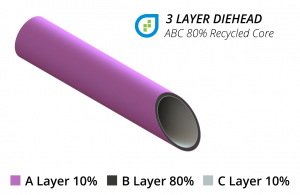
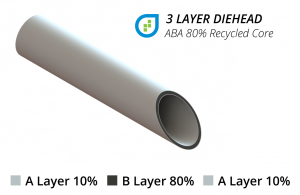
Our three layer extrusion machines can handle pipe of various sizes that are round or flat and still allow controlled delivery of water and fertilizer. In addition, you can mark your pipe with stripes or place other markings on the pipe for quick visual identification of the irrigation lines. A further benefit of three-layer pipes is allowing a thin color coating for the pipe such as purple for treated sewage water, brown for landscape, or white for cooler water temperatures in hot sunny climates. Coloring the entire pipe can be cost prohibitive, but with a three layer crosshead only about 10% of the outer coloring is needed.
If you’re considering upgrading your plant’s pipe extrusion process, consider three-layer technology for your pipes. DRTS supplies pipe extrusion machines that can be customized to meet your specific needs. From stripes to holes, we can help you manufacture the best product possible while being smart about your costs and utilizing cheaper materials when possible.
More from DRTS
Insider Highlight: A Look at Extrusion Die-Heads
The Plastic Pipe Manufacturing Process Utilizing Recycled Materials
5 Ways to Upgrade Your Plastic Pipe Extruder Machine
Plastic Additives and Their Importance in Recycled Materials





